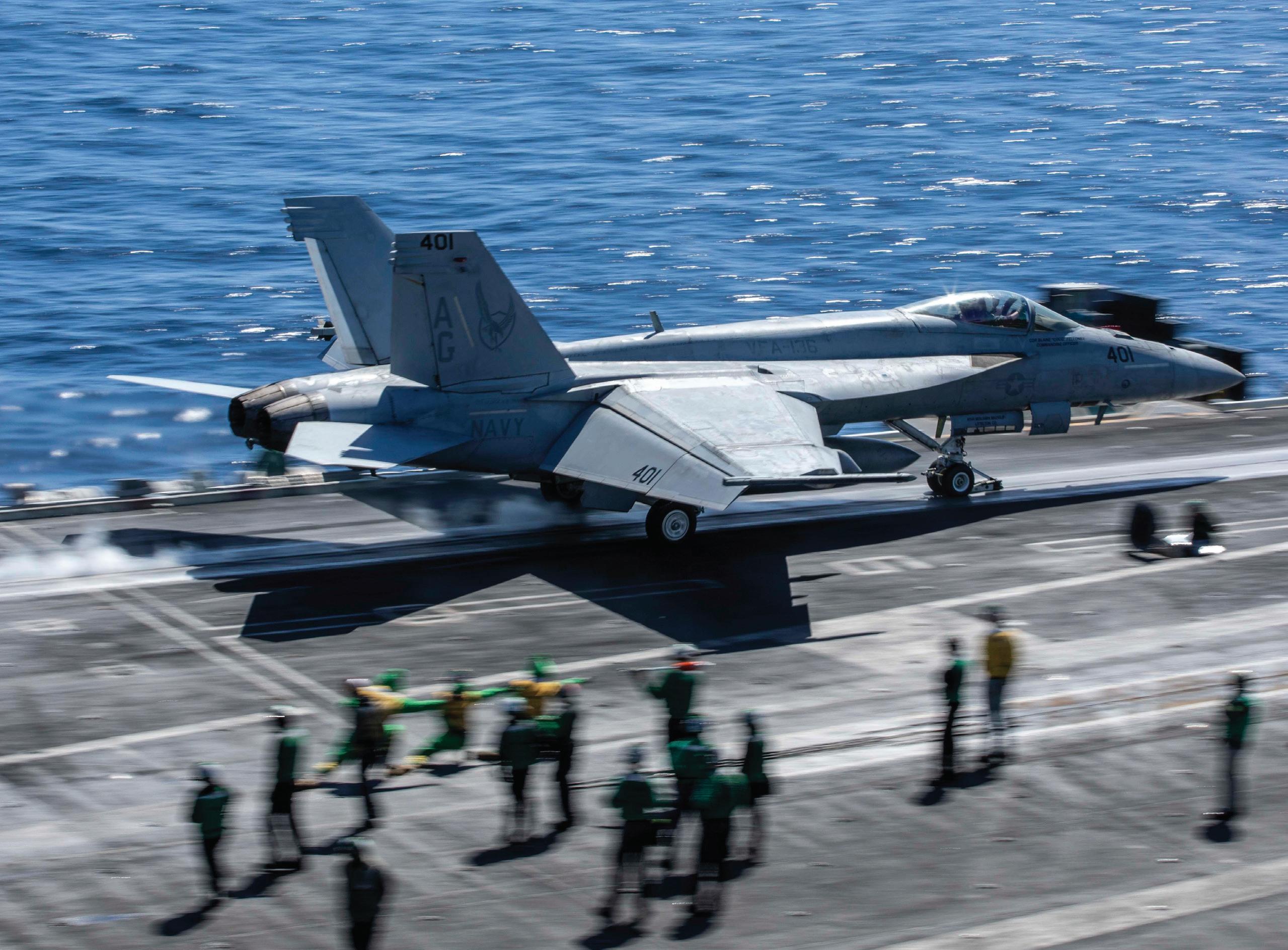
4 minute read
When in Doubt, Bag it Out
By Lt. Griffin Walter, HSM-79
Weall rely on fuel in the Navy, whether it is for a generator to run the lights, a truck to move pallets, a ship to travel across the vast ocean, or to turn rotors on a helicopter during flight. Fuel leads us to do math over and over again in flight, constantly weighing options when they are available. I recently learned the importance of planning and keeping all options on the table while flying during an underway replenishment. We were operating off the coast of North Carolina with several guided missile destroyers (DDGs) and a replenishment-at-sea (RAS) ship. Each DDG was taking on fuel and stores. Our flight schedule was tightly coordinated with the RAS schedule to allow our aircraft time to be airborne for the length of the evolution.
We were warned before the flight the schedule was going a little long. We had factored in enough time for a 45-minute buffer, as well as a planned divert ship in the operating area. We launched as scheduled and began to conduct unit-level training and cleared the local area at max conserve airspeed to allow as much time aloft as possible. Our DDG was now second in line for its RAS. With this updated information, we recalculated our running bingo fuel to our shore divert, which was about 70 miles away. We also established communication with our ready DDG 10 miles away. When we checked in with our ready deck we were informed the deck was fouled due to a propulsion issue. The controller also told us there was a part drop aircraft inbound scheduled to land around the same time we would need a hot pump in case our DDG was not complete with its RAS. We then coordinated with our anti-submarine/anti-surface warfare tactical air controller (ASTAC) on the progress of our ship’s RAS. We received unclear information on the progress and a vague estimated time of completion.
We voiced our fuel concern and requested the Air Boss be called to combat. We knew that having Air Boss present in combat would help bridge the communication gap and severity of the problem between the ASTAC, tactical action officer and our aircrew.
With the lack of a ready deck, we were looking for other options for fuel. We were provided an optional ready deck 80 miles to the south, out of communication range. We quickly ruled out that option since a land-based fuel site was now only 65 miles away and we did not have good comms or a specific location for the pop-up ready deck. We continued loitering, favoring heading toward land as we constantly ran a fuel calculation with wind corrections to the land site with an added 10 minute buffer for airfield unfamiliarity. The weather in our current area was starting to deteriorate and the sea state was starting to pick up. We still had good visibility but there was an added sense of urgency to determine a course of action. As we were approaching our divert bingo with approximately 45 minutes of fuel remaining to land with our minimum fuel required, we received word that the fouled ready deck had fixed its maintenance issue and was now ready to receive us. As we were coordinating our hot pump, the part drop aircraft checked on station. We immediately requested their fuel state. They checked in with three hours and 15 minutes of fuel remaining. After explaining our situation, they agreed we should fuel up prior to them dropping their part off and returning shore side. We grabbed gas on the ready deck while our ship was still conducting its RAS. We began a discussion internal to the aircraft about taking a full 3,800 lbs or taking less to minimize power required for our final landing on our ship or if another tasking requiring hovering arose. The risk decision for our situation was solely based on time aloft, remaining flexible if there happened to be another unforeseen delay in the RAS, and maintaining the capability to close shore if required for poor weather. The aircraft configuration and tasking would not require us to enter a Dip (an out-of-ground effect hover to lower our airborne sonar) where we would want to be lighter to reduce our power required so we ruled out a half fill up. The helicopter aircraft commander said, “Bag it out, who knows if we are going to encounter any more delays today.” We took 3,800 lbs which proved to be a good call because the ship took another 45 minutes to recover us on deck just as the ceilings began to come down, rain began to fall and the seas picked up even more.
After the flight, we had a thorough debrief among the air department. In our debrief, the air boss reassured us the ship’s captain offered to execute an emergency breakaway from the RAS ship, stand up emergency flight quarters and get us on deck in 10 minutes of our request. Though it felt like we were given unclear information by the ASTAC and we couldn’t count on anyone to track our fuel situation, it was reassuring there were serious conversations about our immediate recovery if needed. If there would have been more clear communication from our ship, we could have severely reduced the perceived stressors in the aircrew. We tried to keep as many options on the table by remaining communicative with all possibilities and our current state. I learned that planning for delays is a requirement. When in doubt, over plan. When dealing with complex evolutions such as a RAS, stay flexible. And when given the option and your operating area, risk management assessments and weather allow, always “Bag it out.”










